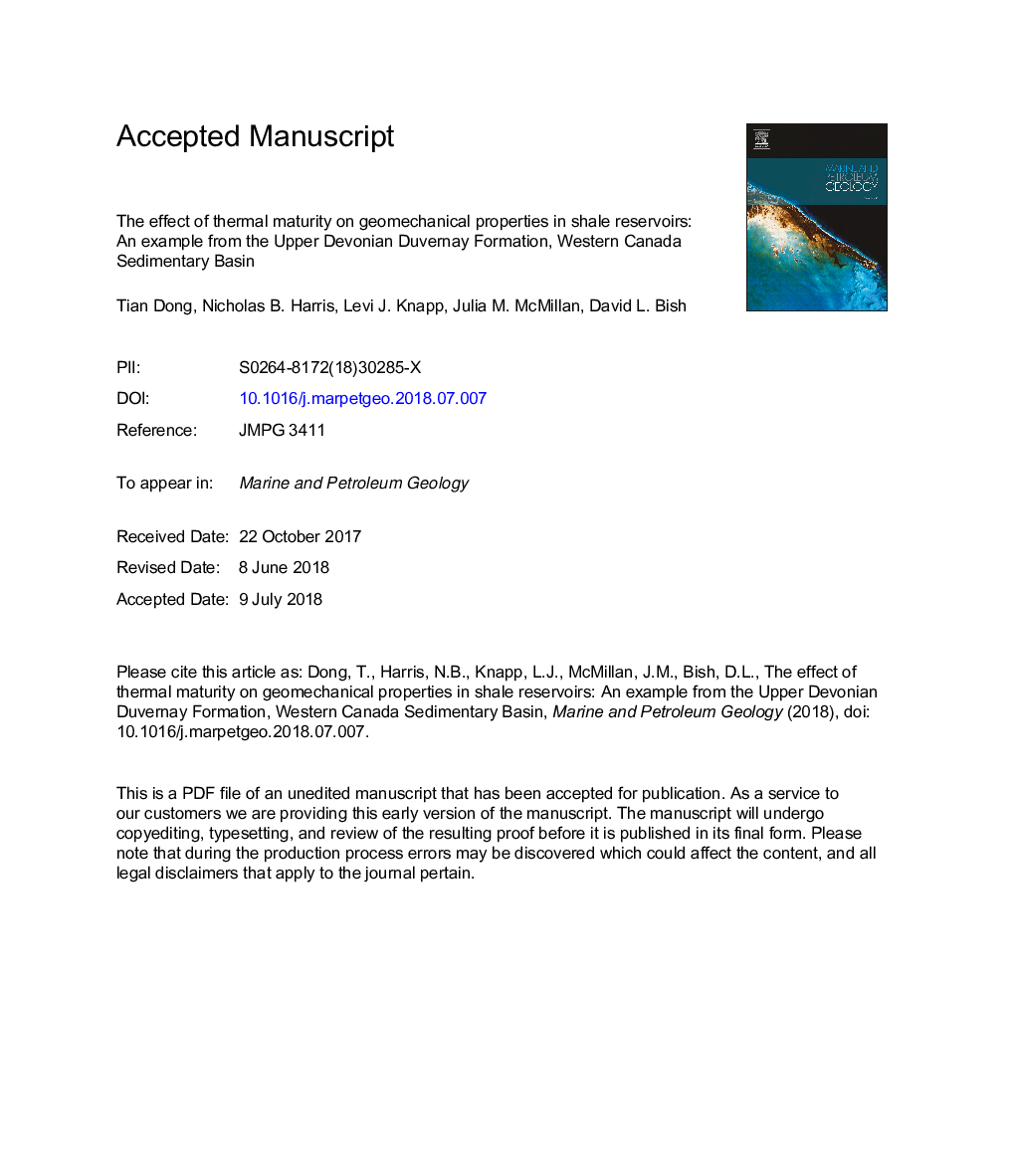| Article ID | Journal | Published Year | Pages | File Type |
|---|---|---|---|---|
| 8908952 | Marine and Petroleum Geology | 2018 | 48 Pages |
Abstract
Increased thermal maturity from immature to oil window results in greater hardness for rocks of similar geochemical compositions. We propose that this results from: (1) enhanced mechanical compaction; (2) carbonate cementation; (3) increased stiffness of kerogen; and (4) partial conversion of kerogen into expelled hydrocarbons that reduces the load-bearing function of the organic matter. At maturities greater than oil window, thermal maturity does not exert a major control on the rock strength; thus, there are no significant changes in hardness between samples from oil window and dry gas window. Geomechanical properties can be related to mineralogy, which exerts a major impact on the geomechanical properties. Quartz cements sourced from biogenic silica rather than smectite-to-illite transition are the primary contributor to the rock strength in the Duvernay Formation. However, it is noteworthy that thermal maturity should also be considered as an important factor when predicting geomechanical properties from mineralogy.
Keywords
Related Topics
Physical Sciences and Engineering
Earth and Planetary Sciences
Economic Geology
Authors
Tian Dong, Nicholas B. Harris, Levi J. Knapp, Julia M. McMillan, David L. Bish,
